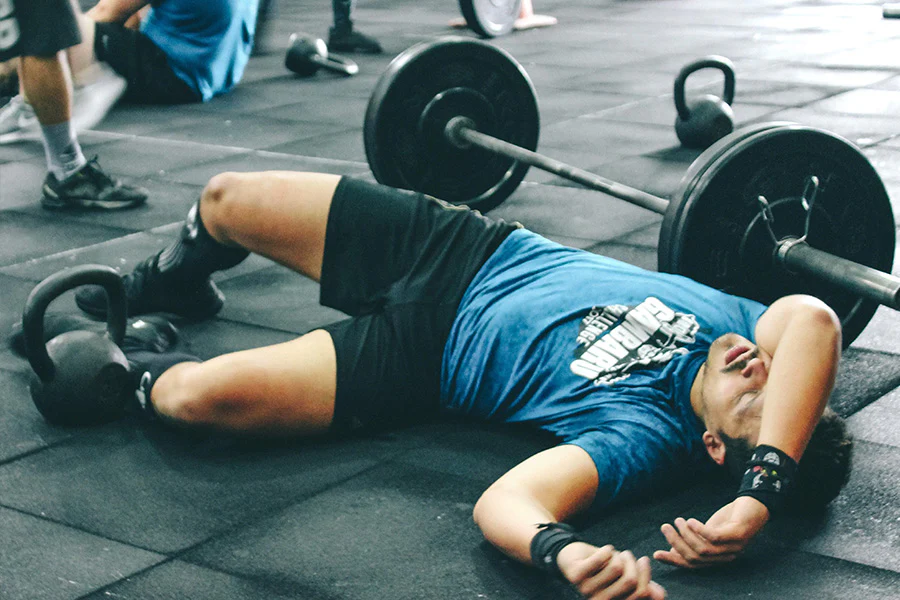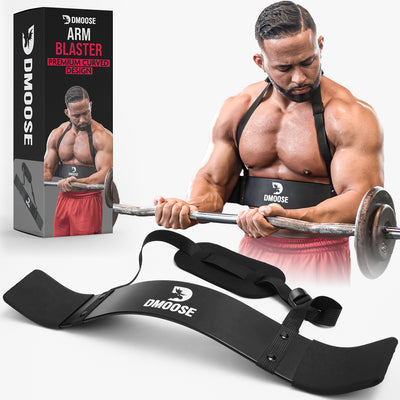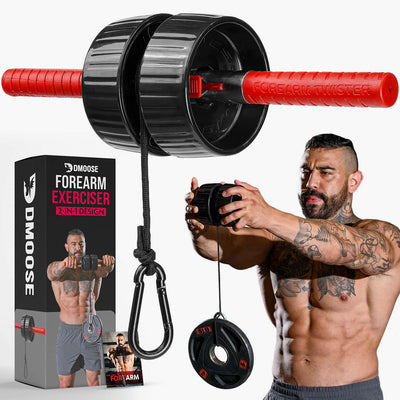It's no secret that most people want bigger arms, but there is so much "fluff" going around that most people are clueless about what to do!
If you search for ways to build bigger arms, you'll face overwhelming and conflicting advice online. Some suggest extreme methods, while others rely only on basic pull-ups.
In this blog, we'll start with essential nutrition before moving into effective strength training strategies for lasting results.
For added support and proper form, you can also use a Bicep Arm Blaster to isolate your arms and maximize your results.
The Science Behind Success
To build muscle efficiently, you must get your information right before perfecting your reps and sets. In a nutshell, you need to educate yourself on the body science behind muscle growth.
Nutrition Behind Hypertrophy
We all keep hearing about strength training and how it is absolutely indispensable when building muscles in general and bigger arms in particular. And that is accurate information. Muscle damage through strength training is necessary to repair and build new muscles.

The Importance of Protein
But is there anything else that's just as necessary? YES! It's protein. Protein, or, say, amino acids are the building of muscles. The total protein synthesis and degradation rate increase exponentially with strenuous exercises like strength training. Which means what?
It means as you hop onto your strength training journey, you need to increase your protein intake if you want to build muscle. If you don't eat enough protein, you'll be just breaking down muscles in your body, as there won't be enough dietary protein to support new synthesis. Simply put, optimized protein intake is something you can't miss when you want to build muscle.
Plant-Based Protein Options
But don't worry if you are a vegetarian. Plant protein works just as well. Most people think of protein as something that comes only from animals, but plenty of plant-based protein sources can provide all the essential amino acids your body needs. Quinoa, for example, is a complete protein, meaning that it contains all nine of the essential amino acids.
Plant-based proteins, such as beans and lentils, can also be combined to create a complete protein. In addition to being a great source of protein, plants are also low in calories and fat, making them a healthy option for anyone looking to improve their diet.
Protein Shakes and Balanced Diet
So, when you aim at bigger arms, aim at shooting your protein levels alongside so you build more muscle when those heavy sets and reps break the existing ones. And if animal protein does not work for you, choose a healthy plant-based protein.
Easier still, gulp delicious protein shakes made from premium protein powder. Protein comes in different shapes and sizes, and all are beneficial. You choose what suits you most efficiently and stick to it.
Protein is the Magna Carta of muscle building but do not just eat protein. A balanced diet works magic because you may hate carbs and fats, but they fill your energy tank and optimize your hormonal profile.
Eat three full meals and snack in between on high-protein items. Do not let your energy levels go too low when training for bigger biceps.
So, work on your nutrition if you want to build bigger arms.
Related Article: Why Does the Human Body Need Protein, and Where Should It Come From?
Perform Exercise With Perfect Form

A general misconception regarding strength training for muscle growth is "the more, the merrier." This is hardly true. The fact is that proper form matters the most. Exercise delivers results when done with correct form, not by doing more reps.
Once you know how to plan your diet for bigger arms, you must also learn how to train correctly to maximize results. There are countless workout plans for bigger arms, but success depends on how you execute them.
Common Training Mistakes to Avoid

Here are the key mistakes that stop your arms from growing. Avoid them, and most workout plans will work for you:
- Rushing through reps without engaging the right muscles or controlling the motion.
- Using improper weights, either too light with endless reps or too heavy with poor form.
- Training to failure too soon or never pushing to failure at all.
- Overdoing cardio or unrelated exercises, such as excessive push-ups for arm growth.
- Skipping rest days, which prevents muscle recovery and growth.
These mistakes are the biggest enemies of bigger, defined arms. Remember, working too fast or too much without proper form goes against the science of muscle hypertrophy.
Focus on strict form, engage the target muscles, control every rep, and allow proper recovery. Do this, and nearly every well-structured plan will help you build strong, muscular arms.
How Long Does It Take to Build Bigger Arms?
There is no single answer to how long it takes to build bigger arms. Several factors influence the rate of muscle growth. These include your current fitness level, the number of weekly workouts, the effort you put into training, and how well you follow your nutrition plan.
Genetics also play a role in how quickly muscles develop. Most people begin to notice visible changes in their arms after 6–8 weeks of consistent training. However, more significant improvements may take up to 12 weeks.
The most effective way to build bigger arms is by gradually increasing your workout intensity and volume while maintaining a proper diet. This approach gives your muscles the best chance to grow.
5 Easy Steps to Bigger Arms in 30 Days
Building big arms is not easy, but it’s absolutely achievable. With proper nutrition and correct form, you can make noticeable progress. Follow these five steps consistently, and you'll start seeing significant changes in just 30 days:
1. Start Arm Workouts With Heaviest Sets First
Many people begin their workouts with lighter weights and build up to heavier ones. This approach is less effective for muscle growth. Instead, start with your heaviest sets first while your energy levels are high. This method helps maximize strength, stimulate more muscle fibers, and reduce the risk of injury.
2. Turn Your Arm Workout Into a Push-Pull Routine
Transforming your arm workouts into a push-pull routine can increase your training volume. Perform these exercises twice a week instead of once. This higher frequency gives your muscles more stimulus, encouraging faster growth and strength gains.
3. Increase Training Frequency
Besides increasing workout volume, boost your training frequency. Aim to train arms three to four times per week instead of just once or twice. This keeps your muscles challenged and promotes faster growth. However, avoid overtraining to prevent fatigue or stalled progress.
4. Vary Your Rep Ranges
Changing your rep ranges prevents your muscles from adapting too quickly. For example, train with 10 reps per set one day and 15 reps per set the next. This variety keeps your muscles guessing and drives continuous growth.
5. Train to Failure
To build bigger arms faster, train until failure. Failure occurs when you can’t complete another rep with proper form. Once you hit failure, stop the set and rest for 60–90 seconds. While you shouldn’t train to failure every session, incorporating it strategically can accelerate hypertrophy.
Related Article: What 'Training to Failure' Means & Is It Good for Hypertrophy?
FAQs
1. Is it possible to get bigger arms in 30 days?
Yes. Focus on strength training, compound lifts, and targeted arm exercises like curls and extensions. Combine this with adequate calories and protein for faster results.
2. How fast do biceps grow?
Biceps growth is gradual. On average, you can gain up to 1 pound of bicep muscle per year with consistent training and proper nutrition.
3. Which muscle is the easiest to build?
Quadriceps and lats tend to respond faster to training, while calves, abs, and forearms are more challenging to grow.
4. How many times a week should I train my arms?
For optimal growth, train arms 2–3 times weekly while allowing at least 48 hours of rest between sessions for recovery.
5. Do I need supplements to build bigger arms?
Supplements like protein powder can help meet nutrition goals but are not mandatory if your diet provides enough protein.
6. Can beginners build arm muscle quickly?
Yes. Beginners often experience faster initial gains due to "newbie gains," but progress slows as muscles adapt over time.
Summary
You can achieve bigger, stronger arms in just 30 days by following the 5 proven steps above. Begin with your heaviest sets, turn your arm routine into a push-pull program, increase training frequency, vary your rep ranges, and train to failure for maximum growth. Stay consistent, and you’ll see noticeable results within a month.













